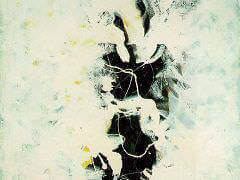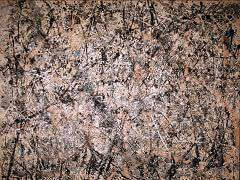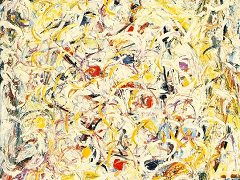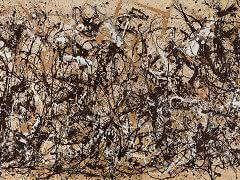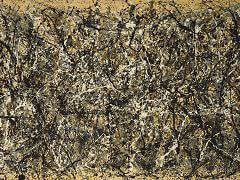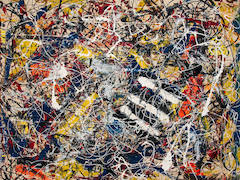Eyes in the Heat, 1946 by Jackson Pollock
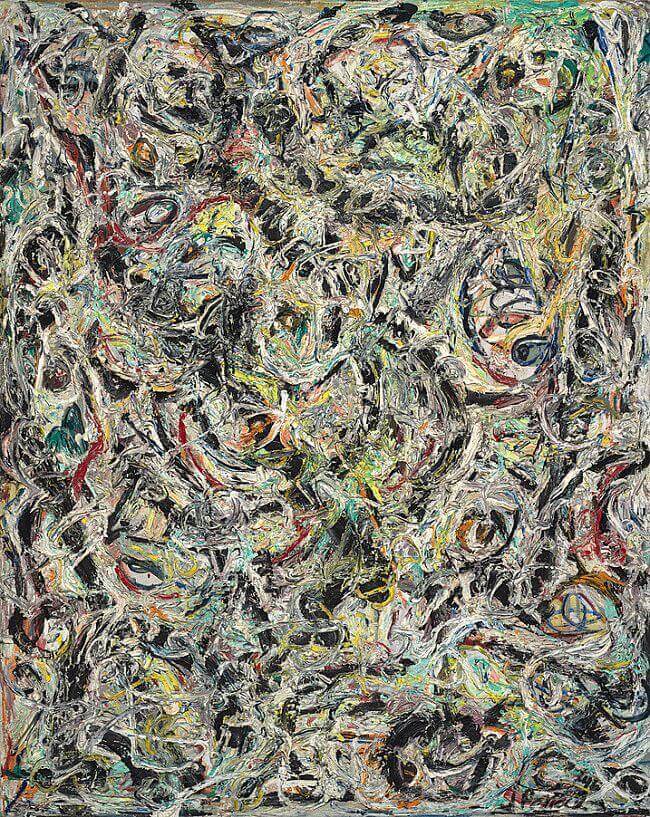
Eyes in the Heat heralds the poured paintings Jackson Pollock initiated in the winter of 1946-47. It is part of Sounds in the Grass, a series of seven canvases that also includes Croaking Movement in the Peggy Guggenheim Collection. Pollock had moved to a house on Long Island in 1945, and early the next summer began using one of the bedrooms as a studio. Later in 1946 he arranged with Peggy Guggenheim to have a show at her Art of This Century gallery, to open in January of 1947; in preparation for this exhibition he worked with great intensity on Sounds in the Grass and the series Accabonac Creek.
Visible effects of the move from New York City to the more rural environment of East Hampton were a lightening of palette and the introduction of themes alluding to nature. Although the light and flora and fauna of Long Island are evoked in a general sense in Eyes in the Heat, particularized figurative references are almost entirely submerged in the layers of impasto that build up the surface. Pollock no longer applies paint with a brush, but squeezes pigment onto the canvas directly from the tube, pushing and smearing it with blunt instruments to create a thick, textured crust. One's gaze is carried along broad swaths of color that swoop, careen, double back, rise, and fall rhythmically over the entire canvas. The watchful eyes of creatures concealed in the paint appear here and there, in their proliferation mimicking the restless movement of the viewer's eyes.



